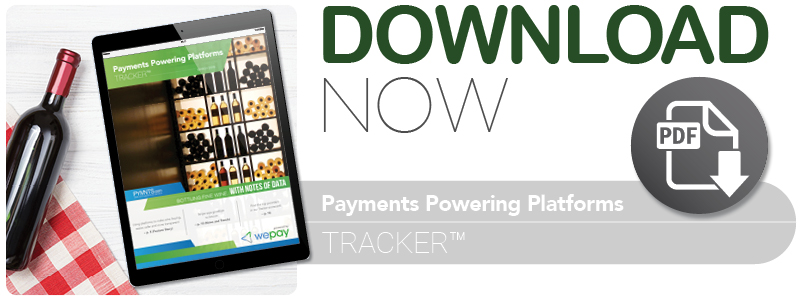Be it red, white or a rosé, every good bottle of wine needs just the right blend of ingredients to transform a bunch of grapes into “bottled poetry.”
Having the right blend isn’t just essential for those making and bottling fine wines, but also for those who make a living buying and selling them. According to Anthony Maxwell, director and head of exchange for fine wine trading and exchange platform Liv-ex, those who make trading fine wine “their day job” need the right combination of data and payments if they want to succeed in the market.
Liv-ex is designed to give these professionals both elements by solving a crucial problem in the wine-trading world, Maxwell said. The result is a buying and selling solution that gives wine traders improved access to data while also improving the security of transactions made on the platform.
“What the wine trade had when we started in 2000 was really just an old-fashioned, inefficient market with no transparency, so traders did not have much confidence in it,” he said.
Processing Payments
Advertisement: Scroll to Continue
Liv-ex serves the secondary market. Rather than working with consumers, or even wine makers, the platform acts as an intermediary between professional wine traders and buyers while also handling the processing of transactions, Maxwell explained.
Buyers and sellers typically utilize bank transfers to make purchases or get paid for their sales, as other payment methods have yet to make an impact on the industry. A small percentage also store money in an exchange account to fund future purchases, but these are a relative rarity.
Liv-ex currently has customers in roughly 38 countries. The platform accepts payments in three currencies – the American dollar, the Euro and the Hong Kong dollar – to better assist them.
Making Wine Trading Safer
The company works to do its due diligence before a user ever accesses data or transacts on the exchange, Maxwell said. This is to help protect customers, their transactions and the sensitive data within them.
The exchange is not open to the public, instead designed as a closed B2B network for professionals. Potential users must first become members to access Liv-ex. That process includes background checks and vetting by a membership committee that ensures applicants are who they claim to be and own the wine they claim to own.
“We’ve got quite a tight group of members,” Maxwell said. “There are only about 400 of them around the world, and we know them all well. The other good part about running a membership is that it’s a pretty small industry [with] a small group of members, so it’s easy to get blackballed quickly, and that’s a big threat to wine traders.”
But making wine trading safer isn’t just about protecting payments, he added. Before Liv-ex, dishonest sellers would often try to pass off wines as something they weren’t, or would deliver otherwise substandard product to buyers.
To prevent this, all wines must be delivered from sellers to Liv-ex warehouses for inspection before being shipped to respective buyers. For the company, verifying purchases goes hand-in-hand with offering trustworthy data.
“All of these different things go back to what we originally set out to do, which is to bring transparency, efficiency and safety to the wine trading industry,” Maxwell said.
Giving Traders More Confidence
One of the reasons behind traders’ previously low confidence in wine trading marketplaces was a lack of objective, transparent and trackable data on factors like pricing and scarcity, he added.
Statistics by any source – including data on certain varietals’ pricing, or how many bottles of a wine were left unconsumed in the world – was formerly provided by those selling the bottles. That represented an inherent conflict of interest and, perhaps unsurprisingly, prices were often inaccurate as sellers inflated metrics to make their sales seem more appealing or rare.
“The key thing about our data is [that] it’s independent data,” Maxwell said. “It’s also standardized and [has] some quality control elements, so that traders can trust [it] and know what the state of the market is.”
The platform offers a pair of data tools designed to deliver real-time pricing and availability information – or a lack thereof – to traders.
One tool, the Liv-ex Wine Identification Number (LWIN), assigns a unique, seven-digit numerical code to each type of wine being traded on the platform. In addition to reducing confusion over product names, the code numbers refer to the wine’s producer or brand and originating grape or vineyard – all to help traders track wine without worrying about whether they might be following the wrong variety.
Liv-ex then pairs LWIN numbers with its other data tool, the Wine Matcher, designed to enable users to track pricing and scarcity data on up to 5,000 different LWIN numbers at one time. It tracks current and historic price points, too, allowing users to upload a list of desired bids or offers on certain varietals, then finds matching wines that can be purchased for the submitted offer. Lastly, it makes such suggestions to users.
Sellers can use the Wine Matcher tool to check their own sales against current market prices, including recent bids and transactions that compare with their own movements.
“The two are really designed to work together so that our members can trade more efficiently,” Maxwell said. “[That’s] because they better understand how the market is behaving rather than having to do as much guesswork, and they have some kind of reliable data they can use to make a trade on the back of.”
That sounds like something to which wine traders can toast.
About the Tracker
The Payments Powering Platforms Tracker™ serves as a monthly framework for the space, providing coverage of the most recent news and trends, along with a provider directory highlighting the key players contributing across the payments-integrated platform ecosystem.





